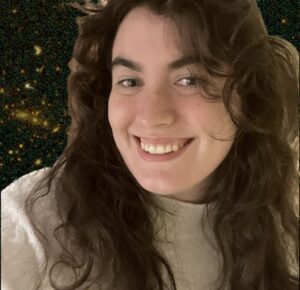
Michael McDonald
Associate Professor
of Physics
Welcome to our research group!
Galaxy clusters serve as unique cosmic laboratories where a variety of astrophysical processes can be studied, including the growth of structure, plasma physics, the environmental drivers of galaxy evolution, and the co-evolution of massive galaxies and their central supermassive black holes. As the most massive collapsed objects in the Universe, they anchor studies of structure formation, providing some of the most precise constraints on the amount and distribution of matter in the Universe. As the deepest gravitational potentials in the Universe (outside of black holes), they serve as “closed boxes”, allowing the study of galaxy evolution and baryon fractions in a simple and robust way. These deep gravitational potentials heat the intergalactic gas to temperatures of >107K, creating a plasma that glows in the X-ray and can be studied in much greater detail than the more diffuse circumgalactic medium. Finally, the most massive black holes in the Universe are found at the centers of galaxy clusters, where they act as cosmic thermostats, regulating cooling of the intracluster plasma on enormous scales.

My group tackles a wide variety of astrophysical problems, with galaxy clusters serving as the most common (but not exclusive!) backdrop for these studies. The hallmarks of our research include: i) the study of both nearby and the distant galaxy clusters, to track the evolution of these massive structures and their member galaxies, and ii) the use of multi-wavelength data from a variety of ground- and space-based telescopes to probe a variety of physical processes. To this end, we utilize a wide variety of both space- and ground-based observatories, including the Chandra X-ray Observatory, the Hubble Space Telescope, the James Webb Space Telescope, the twin 6-5m Magellan telescopes, and the South Pole Telescope, among many others. Some of the big questions that we are attempting to answer with these multi-wavelength data are:
- When did the first galaxy clusters separate from the cosmic web, virialize, and relax?
- When and how was the intracluster medium, and the rest of the hot diffuse Universe, enriched with metals?
- When and how did the most massive galaxies, which are found at the centers of clusters, assemble?
- How do supermassive black holes accrete gas from the hot phase and regulate cooling on large scales?
- Under what conditions is cooling suppressed or enhanced in the intracluster medium?
- When and how did supermassive black holes begin regulating cooling?
Many of these “when” questions benefit from a recent boom in the discovery of high-redshift galaxy clusters by surveys that utilize the Sunyaev Zel’dovich effect to discover the most distant galaxy clusters. In particular, with the South Pole Telescope (SPT), we are discovering and characterizing some of the most distant clusters known. The SPT surveys, along with subsequent multi-wavelength follow-up, have enabled the first studies of well-selected cluster samples spanning 10 billion years in cosmic evolution. We study these distant clusters, along with their more nearby descendants, with the aid of a plethora of observing facilities, including Chandra and XMM-Newton in the X-ray, Hubble in the UV and optical, Magellan in the optical and near-IR, Spitzer and JWST in the near- and mid-IR, Herschel in the far-IR, ALMA and SPT in the mm, and ATCA and VLA in the radio, among others. These multi-wavelength data allow us to study all phases of the gas, from molecular to fully ionized, the dust and stars, the dark matter, and the accretion disks and jets of supermassive black holes.
Current Graduate Students
Current Postdocs
Former Graduate Students

Michael Calzadilla

Taweewat Somboonpanyakul
Former Postdocs

Aysegul Tumer

Florian Ruppin

Allison Noble






